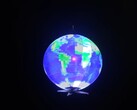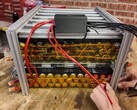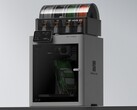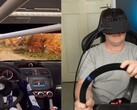A Reddit user, bharms27, has created and shared a pretty novel DIY project: a 3D-printed, NFC-powered cassette player that is every bit nostalgic as it is modern. The project, showcased on r/3Dprinting, recaptures the act of intentionally selecting and playing music - like placing a tape in a Walkman or a record on a turntable - by making each digital "album" a tangible artifact.
The player consists of a phone docked into a 3D-printed enclosure that resembles a classic cassette player. The "cassettes" themselves are shells made from multiple 3D-printed parts, laser-cut acrylic, and custom vinyl labels. There's an embedded NFC tag inside each tape: when tapped on (or near) the phone, the cassette’s unique ID is read, automatically launching the associated album or playlist in a music app like Spotify.
The design was modeled in Rhino 3D, printed on a Bambu Labs P1S (curr. $699 on Amazon), and deliberately engineered to avoid the use of print supports. Small functional details - such as screw-joined halves and rollers that can be spun with a pencil - make the casettes look like real analog tapes. In the attached photographs, you can see the "Ritual Industries" app interface as music starts playing via a scanned cassette.
On the software side, bharms27 wrote a simple music player app using Processing, later moving to Android Studio with help from AI to enable Spotify controls. This choice means playback currently favors Android users, as iOS’s tight NFC policies and varied reader placements are a barrier. The developer added that iOS support could follow if there’s enough interest.
Community response has been quite favorable too. There are multiple suggestions for feature improvements (like playback pause when removing a cassette) and a broader ongoing conversation about streaming alternatives.
For those curious, bharms27 has documented additional experiments with tangible digital tech on their Instagram handle, @ritual.industries. The project, while not commercialized, is a neat example of the growing reach and appeal of maker culture, open hardware, and personal fabrication. We have also covered similar 3D-printed DIY projects in the past, such as this ultra-compact camera that uses a mouse sensor and the world's fastest drone.
















